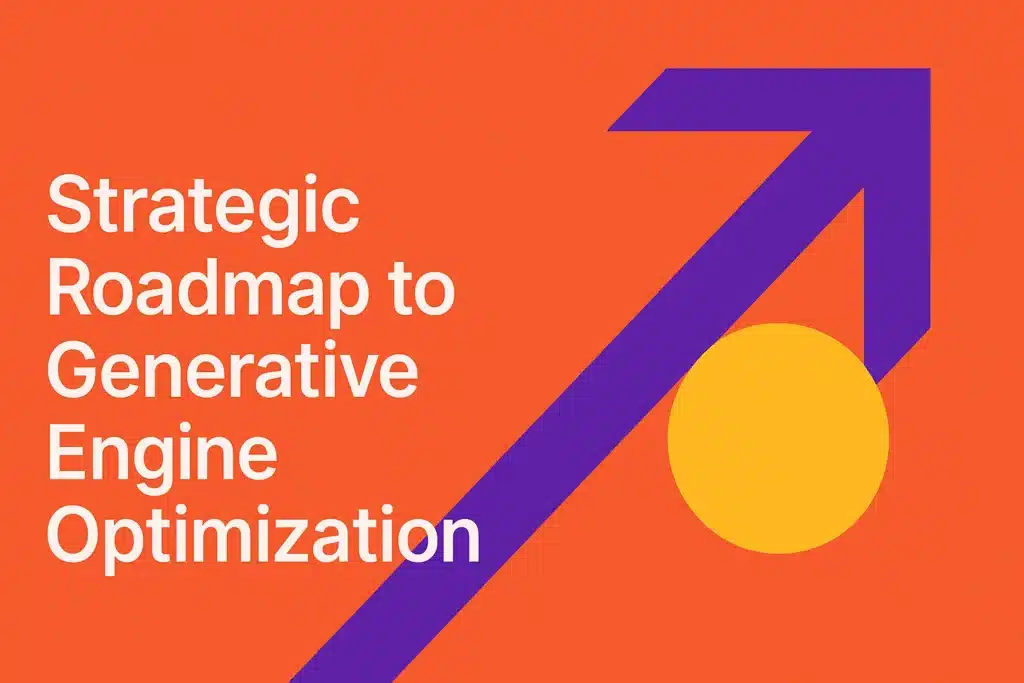People and businesses rely on search presence to reach their audience. Generative engine optimization is distinctive as a new approach that uses AI for more targeted results. As classic tactics shift, a user-focused approach grows. This blog explores how AI-driven search changes content, ranking, and planning for better online results.
What Is Generative Engine Optimization
generative engine optimization combines standard SEO with AI-driven techniques for content. It emphasizes matching user queries with changing results. This method helps websites appear in advanced AI-based search features faster.
How it differs from traditional SEO
GEO relies on advanced AI algorithms to produce content that is distinctive for readers and crawlers (TheeDigital). Classic SEO relies on manual approaches. GEO automates keyword analysis and content generation but always keeps quality and relevance leading.
Key technologies powering the shift
Researchers from Princeton, Georgia Tech, the Allen Institute for AI, and IIT Delhi shaped GEO’s nine-step approach (SmartBug Media). AI algorithms power generative tools like Google’s Search Generative Experience, offering more thorough query understanding and data-driven results.
Role of AI in Generative Engine Optimization
AI powers generative engine optimization by analyzing large user data sets and patterns. It uses predictive models, natural language processing, and real-time feedback from observed search behaviors. Then it adjusts to actual questions, increasing accurate matches and content finding. AI algorithms adjust ranking signals so relevant pages gain importance. Through ongoing machine learning, those signals develop, which further improves search outcomes. AI adds personal approach touches by letting websites handle unique preferences. Such personal approach leads to better traffic and engagement. Because AI predicts trends, businesses can improve their online presence. Overall, it changes SEO into a planned, user-focused method that applies advanced content study.
How ai content optimization shapes user intent mapping
ai content optimization improves relevance by matching material with user questions. It identifies what people want and produces custom information. Nearly 70% of Modern Learners say they use AI tools for chat support, and 37% rely on these tools to investigate educational options (EducationDynamics). This personal approach meets immediate needs. Through analyzing inputs, AI shows the intent behind each term. In turn, it generates the right text that attracts user interests. This tactic increases engagement because the content speaks to genuine concerns. When AI-based search finds highly relevant pages, it builds trust and raises click-through metrics, which also stimulates conversions.
Building predictive models using machine learning in SEO
Building predictive models using machine learning in SEO includes analyzing large volumes of data. Each minute, 5.9 million queries occur on Google, totaling around 3 trillion annually (ResearchFDI). These figures direct algorithms that predict user decisions. By analyzing patterns, machine learning finds new topics and tells content approaches. Companies plan content that matches with probable questions and adjusts to new data that forms future shifts. Predictive analytics improves essential link-building goals and other technical factors, increasing online presence. This data-led structure cuts guesswork, helping websites stay current while getting a competitive edge. It simplifies effort and saves resources.
Personalization through automated SEO content generation
Personalization through automated SEO content generation uses AI to produce personalized pages. Machine learning tools evaluate user histories, predict behaviors, and select pieces that speak to people’s needs. Such automated workflows accelerate processes, allowing marketers to shape deeper experiences. Tools like ChatGPT create product details or social text and match user expectations by analyzing query intentions, which raises engagement. Automation reduces overhead because it cuts repeated steps and reduces release cycles. As personal approach increases, visitors find content that matches personal interests, which improves loyalty. Platforms gain better traffic retention and more reliable conversions. It ultimately reinforces brand identity.
Crafting a Strategic Roadmap with AI in SEO
Crafting a strategic roadmap with AI in SEO includes intentional planning. First, pick objectives that focus on AI-driven exposure instead of conventional placements. Then create a list of target concepts linked to user motives. Next, publish pages that include those keywords while staying user-friendly. AI-driven analytics also show missing themes or hidden terms. By tracking performance, teams can improve their strategies. You might add chatbot tools or voice-activated modules for more reach. Every step should match with the brand’s vision. This process combines creativity with data, making sure an adaptable structure that helps your platform expand and develop.
Set performance baselines and define key metrics
Set specific AI-focused goals, such as increasing session duration by 50% (Xponent21). Avoid vague goals that only track rankings. Instead, track AI-based mentions and how many new users arrive through chat assistants or voice queries. Such clear targets guarantee each piece fulfills a clear purpose, whether it records brand citations or drives sign-ups. Always pick metrics like citation counts or page visits to see if your content meets its objectives. Structured data helps AI highlight important sections of your website. This structured plan upholds consistent growth and user confidence.
Use search engine optimization with AI for gap analysis
Use search engine optimization with AI for gap analysis by comparing your existing content against actual user queries. This process reveals missing subjects or outdated material. AI tools help highlight areas where new details could improve. They also speed rival reviews, showing where your site is lacking. By analyzing query frequency and user intent, you can fill holes. Then you adjust headings, subpoints, and relevant information. This strategy increases site depth, attracting more visitors. A comprehensive gap check also improves trust and develops better brand loyalty.
Align SEO content with AI decision smart tools
Align SEO content with AI decision smart tools so they serve predictive algorithms successfully. Each minute, 5.9 million Google searches happen (ResearchFDI). That volume requires structured pages that algorithms parse quickly. Include clear headings, concise paragraphs, and logical links. AI systems understand user signals to improve content or spot possible angles. By adapting copy for a normal Q-and-A style, your content appears in chat or voice-based results. Pairing these efforts with decision tools influences brand presence. When pages are easy to understand, people react with clicks and longer sessions.
Unlock future metrics through benefits of AI in SEO
Access future metrics through benefits of AI in SEO by adding predictive skills and strong data study. By 2030, AI might add $19.9 trillion to global GDP (ResearchFDI). Marketers apply this tech to forecast query volumes, highlight new keywords, and shape new approaches. Future metrics could include voice-driven traffic or AI chatbot referrals, showing changes in user habits. Adopting AI now prepares you for those new measurements. As AI improves, websites gain deeper knowledge of user behavior, which encourages more quick decision-making. This future perspective keeps brands adaptive.
Conclusion
generative engine optimization indicates a pivotal moment for websites that aim to earn trust and stay visible. AI-focused techniques now guide search engines toward deciding which pages deserve prominent ranking. By adopting this approach, teams create content based on user needs, driven by tools that adjust to real-time data. Combining AI’s predictive models with automated SEO content enables more accurate targeting. It also lets marketers access advanced performance metrics for greater clarity. Classic SEO remains relevant, but AI expands possibilities by combining new ideas with proven tactics. Those who adopt GEO early place their brands at the forefront of discovery. They meet demands with exactly matched content.
FAQs
How does generative engine optimization improve organic rankings?
What are the best tools for ai content optimization today?
Where is machine learning in SEO heading in the next five years?
How is automated SEO content generation replacing manual workflows?
Can search engine optimization with AI improve ROI at scale?
What are the major benefits of AI in SEO for mid-sized businesses?

Ridam Khare is an SEO strategist with 7+ years of experience specializing in AI-driven content creation. He helps businesses scale high-quality blogs that rank, engage, and convert.



